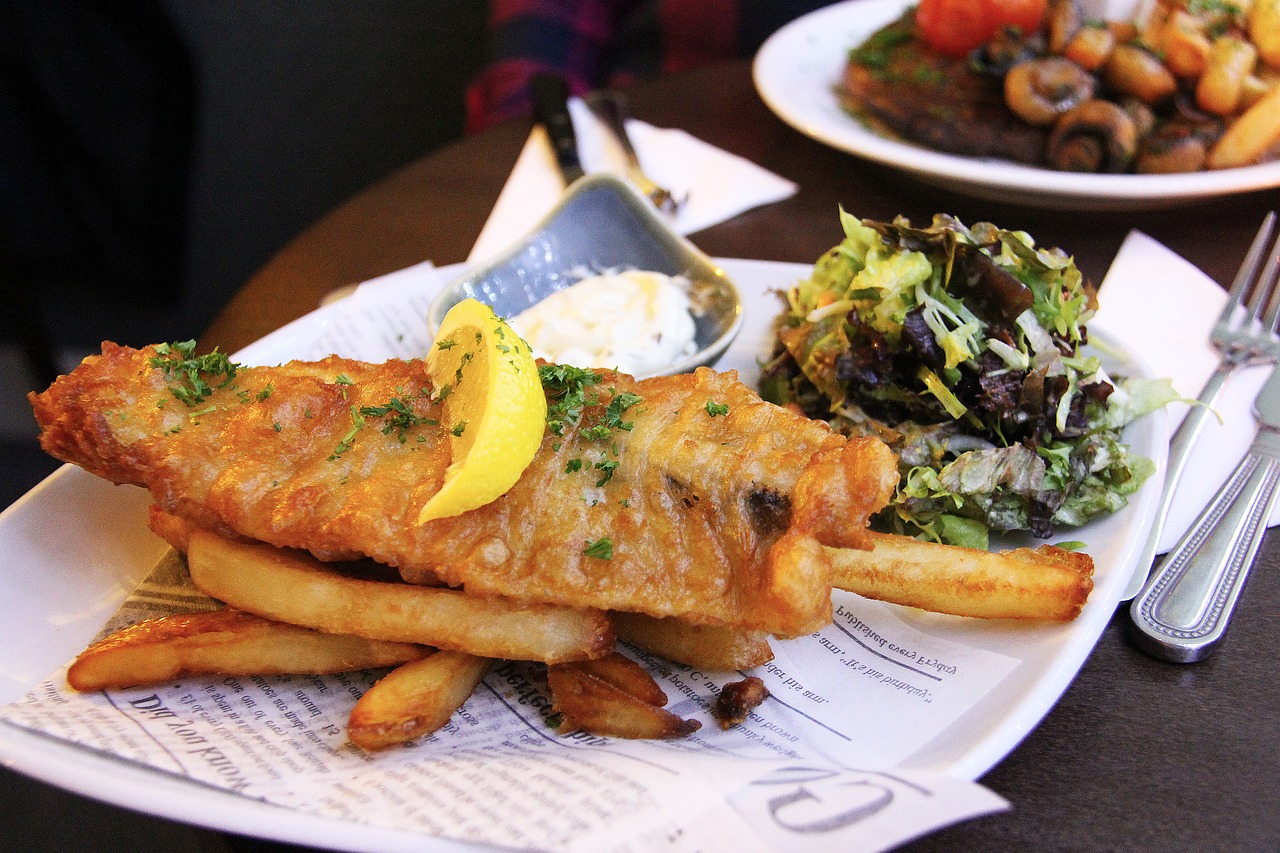It’s available at every pub, diner, and even the occasional airport food court. But what’s the difference between fish and chips and a fish fry?
Fish and chips are deep-fried single servings of frozen cod, hand-cut potatoes, frozen peas, and fried in vegetable oil.
A fish fry is an American dish that consists of fried catfish or other white-fleshed freshwater fish with a thick cornmeal crust.
They are generally served whole with chips (French fries), hushpuppies (cornbread balls), coleslaw, tartar sauce, malt vinegar, ketchup or hot sauce for dipping or slathering.
The difference is mostly regional. You’ll find more fish fries on the East Coast than you will on the West Coast where people prefer traditional British-style battered fish.
The Fundamental difference between fish and chips and fish fry, is that fish and chips is the British and Australian term for the dish of deep fried fish and potato and fish fry is the American term for the similar dish. Other Subtle differences include batter and breading and common fish species used.
Differences in ingredients
They’re also cooked differently. Fish and chips are deep-fried in vegetable oil, while a fish fry can be deep fried in beef tallow or lard for an extra crispy crust.
Fish Fry also come with more variety in terms of sides than just chips (French fries). The sides include coleslaw, hushpuppies (cornbread balls), tartar sauce, malt vinegar, ketchup or hot sauce for dipping or slathering. Fish and chips are commonly served with tartare sauce and salad.
Conclusion
Fish and chips is a dish that originated in England and consists of fried pieces of fish fried in batter, typically cod or haddock, and served with chips. Fish fry is a traditional American dish and consists of fried pieces of haddock or other fish , and served with fries.
The main differences between the two dishes is that in fish and chips, Brits and Australians call it what Americans also serve: a dish of deep-fried fish. Fish fry just refers to an American meal made up of fried fish with potatoes. The subtle differences include batter or breading on the food, plus which species of fishes are used most often for these meals.

